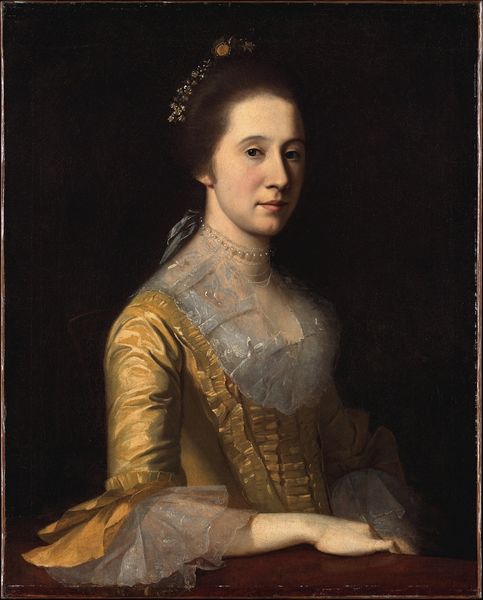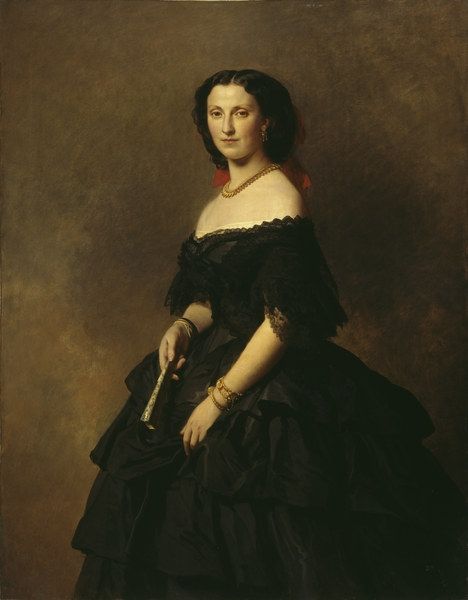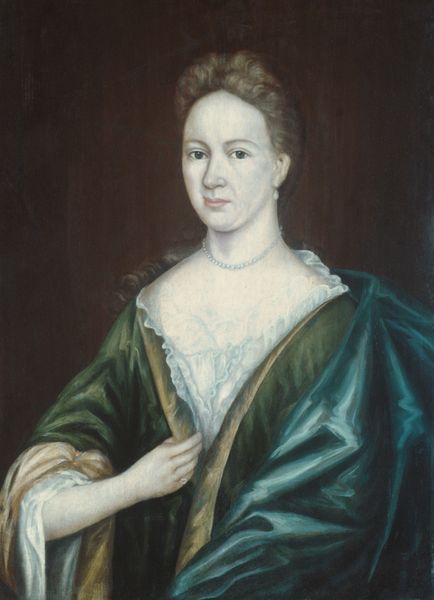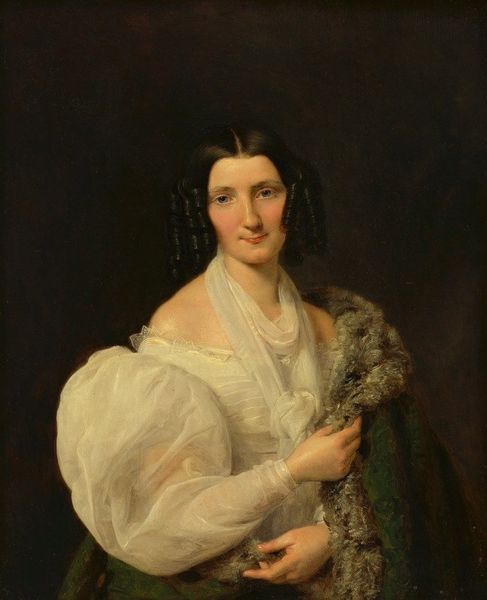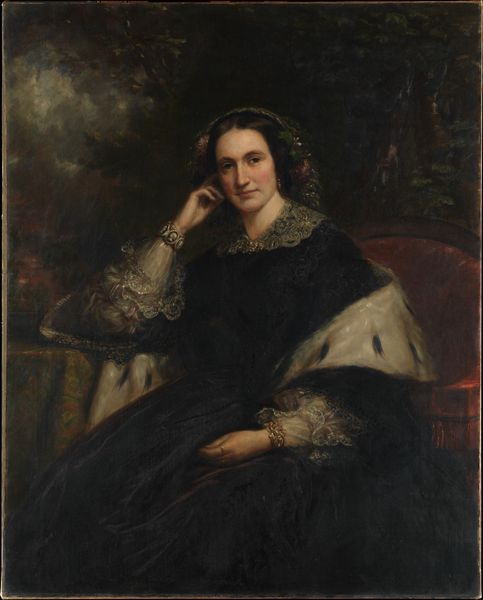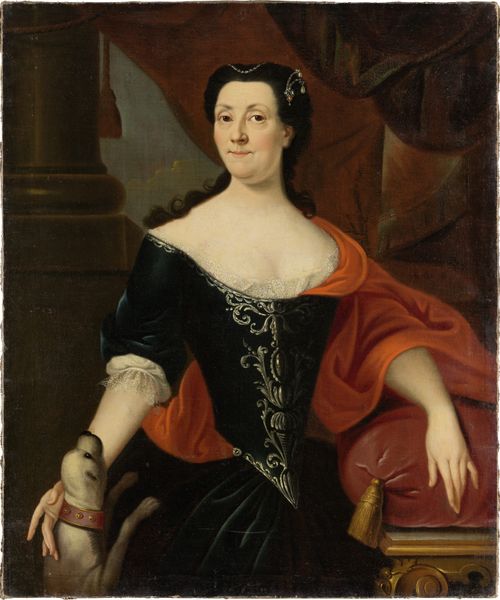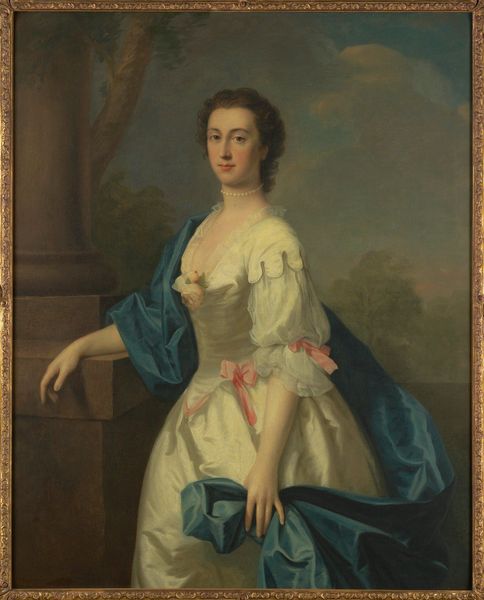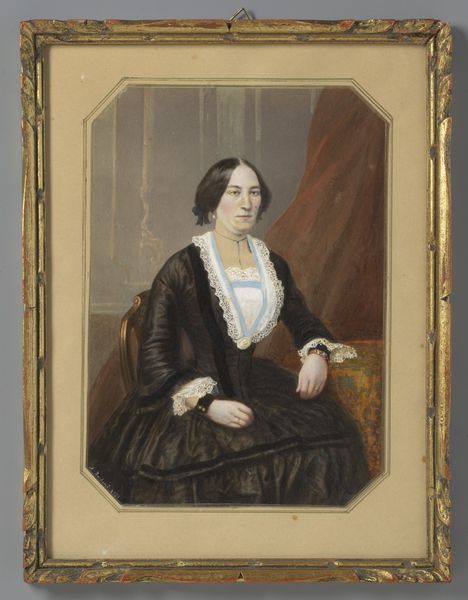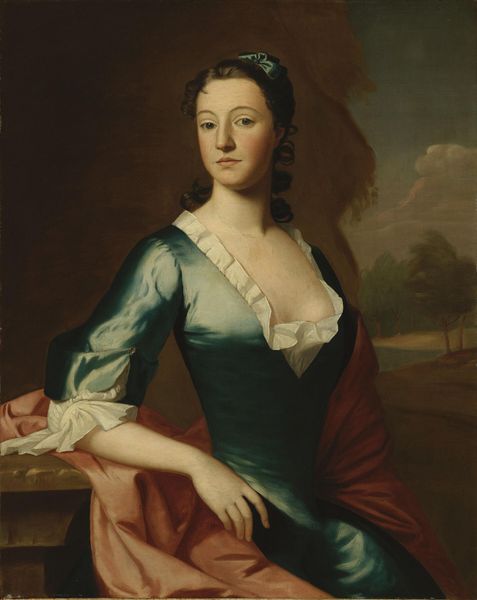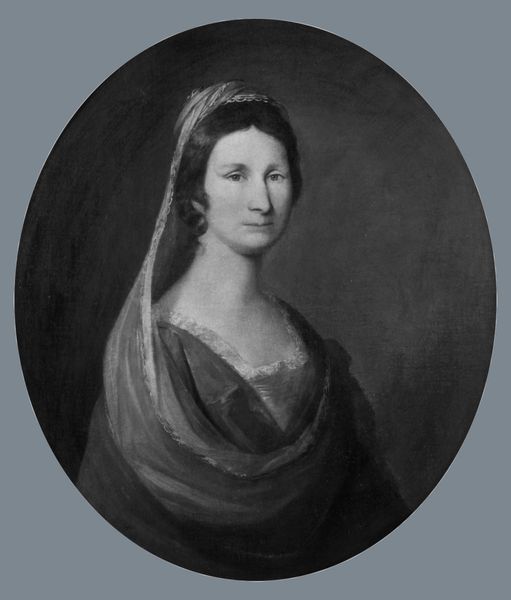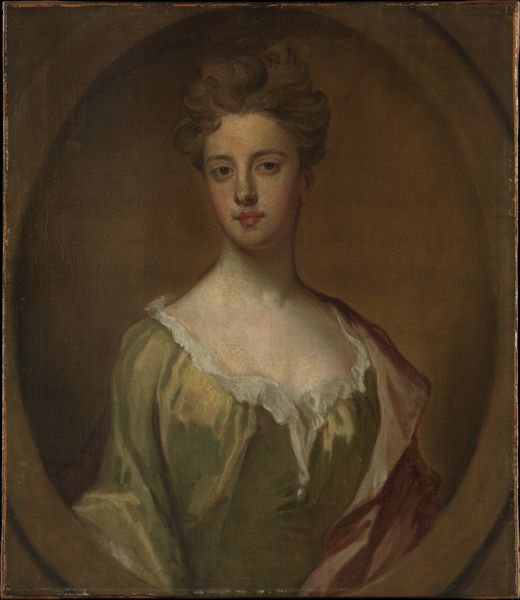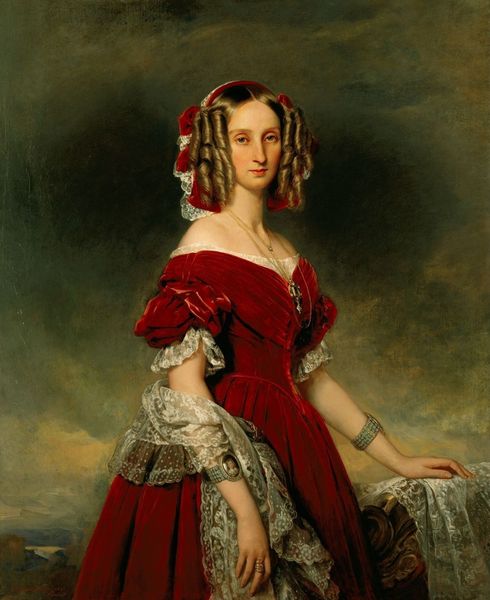
Copyright: Public domain
Curator: Welcome. Here we have Henryk Rodakowski's "Portrait of Zofia Dzieduszycka", completed in 1874. Editor: It's immediately striking how grounded it feels despite its opulence. There's a weightiness to the materials—the fur, the heavy velvet of her gown—that makes the subject seem incredibly present, almost confronting. Curator: Indeed. Rodakowski was a master of psychological portraiture. He operated within the late Romantic and early Realist traditions, so it is history painting translated to the scale of an individual. Consider the social position of Zofia; these signifiers of wealth and status –the fur, the pearls, the lace –they all underscore her place within the Polish aristocracy. Editor: And the labor! The sheer amount of work required to produce that lace, or even that subtle velvet… These materials weren't simply acquired, but produced through immense human effort, often invisible. It reminds us of the social stratification embedded in even the simplest garment. And fur. So sensuous but so savage to obtain. Curator: That's a crucial point. Portraiture of this era often served as a statement of cultural capital and dynastic aspiration, but one wonders how Rodakowski felt portraying people with inherited wealth and privilege? He himself came from a similar background. The success of such commissions reinforced the social structure within which he was implicated. Editor: Right. It all comes back to that interplay between the subject and the material. I keep circling back to that fur wrap – a raw animal hide transformed into high fashion. There's a tension there between the cultivated world and the wild that underscores the constructed nature of wealth. Curator: I agree. Rodakowski invites us to reflect on the individuals and the broader political and social forces that defined 19th-century society. It is fascinating that a garment like a fur can embody so much material history, and yet be presented simply as an object of beauty and status. Editor: Looking closely at the tactile quality in her face and adornments, it really begs you to examine it not as just a painting of a woman but a canvas charged with materiality, labour and, power. I'll certainly not look at fur the same way anytime soon. Curator: And hopefully with a richer understanding of the historical contexts in which such powerful works came into being. Thank you for your reflections.
Comments
No comments
Be the first to comment and join the conversation on the ultimate creative platform.
